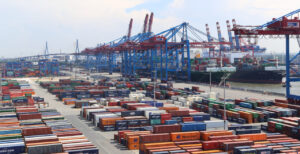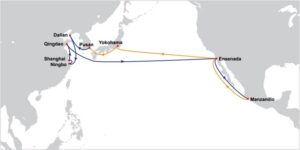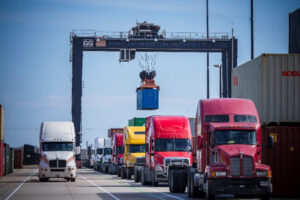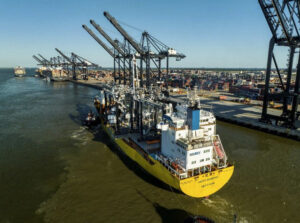Luc Castera, Co-Founder of Octopi TOS, which develops a terminal operating system (TOS) called Octopi, examines Software-as-a-Service (SaaS) for today's port terminals.
Traditionally, organizations were required to maintain on-premise software solutions. Adapting to a new software was a costly undertaking in regards to implementation and user adoption.
Because of this, we’re now seeing more and more organizations adopting SaaS solutions.
The SaaS method of software delivery allows organizations to pay a subscription fee to use a specific software and the software vendor is in charge of managing and hosting the software – rather than requiring the organization to install, host, and manage the software themselves.
In the world of port operations, the SaaS model allows ports to free up capital at the terminal level and grants terminal managers the freedom to do what they do best — focus on running operations.
Here are just a few of the many reasons why SaaS is so beneficial for today’s port terminals:
View Octopi TOS in the PTI Supplier Directory
Reduced Costs
SaaS provides notable savings when compared to traditional, on-premise solutions.
First, the SaaS model eliminates all upfront costs of installation, as well as ongoing maintenance and system upgrades.
SaaS applications are easily accessed and maintained by the service provider, not the customer.
Additionally, most SaaS models are typically pay-as-you-go, allowing port terminals to only pay for the services they need and avoid hefty licensing fees.
This can be especially advantageous for small to medium cargo terminals.
The subscription-based model also demands that SaaS vendors always be innovating and keeping their customers happy.
This is often the opposite of legacy system solutions where once they’ve sold customers on their solution, they feel as though they’ve completed their mission.
Painless Upgrades
Making time for software updates can be costly and put a serious dent in terminal productivity.
New releases and upgrades often force port terminals to purchase the latest version of the software or its features to remain competitive.
With a SaaS solution, all of this is eliminated. Because the SaaS provider is in charge of all software upgrades, software is automatically updated without the need to update software on-premise, or waste time waiting for each user’s device to be updated.
Usability
With a SaaS solution, learning curves tend to be much lower, as people have become so used to finding solutions on the Internet they tend to already have some training on how to use web-based applications.
It’s also not uncommon for SaaS providers to put a great deal of effort into developing software best practices and demonstrations to showcase the ease of implementation.
With SaaS, everything is configured and ready to use from day one, so everyone involved in a terminal’s operations can get started right away.
Scalability
One of the greatest benefits of a SaaS solution is that it offers the option and flexibility to scale.
Because the software is hosted externally, making changes is easy to do and the cloud server infrastructure can be upgraded to easily match an increase in terminal activity.
SaaS solutions can grow with your terminal and as your terminal grows, there’s no need to purchase larger or more powerful servers.
SaaS software can also be easily integrated with other SaaS offerings at the terminal level using web service or Application Programming Interfaces (APIs).
This means that a port terminal can combine software services to create the exact solution that fits its needs and avoid paying for solutions it’s not using.
When additional services are added, there’s no need to worry about server capacity, since it is provided by the SaaS vendor.
Ultimately, it’s up to your organization to decide if a SaaS solution is right for your needs, but if you’re searching for a long-term, scalable solution to upgrade your current terminal operations, then the SaaS model may be the perfect fit.
Octopi TOS is a modern, SaaS web-based Terminal Operating System. It can be implemented quickly without specialized IT personnel. The Octopi TOS is cloud-based, meaning terminal operators do not need to maintain a data center with costly servers and software licenses.
It also means customers (such as consignees, exporters, or shipping lines) can be invited to sign-in with a web account and view the status of their cargo at the port and port terminal KPIs of interest to them.
Check out how Octopi TOS can maximize productivity and ROI for your port terminal today.











